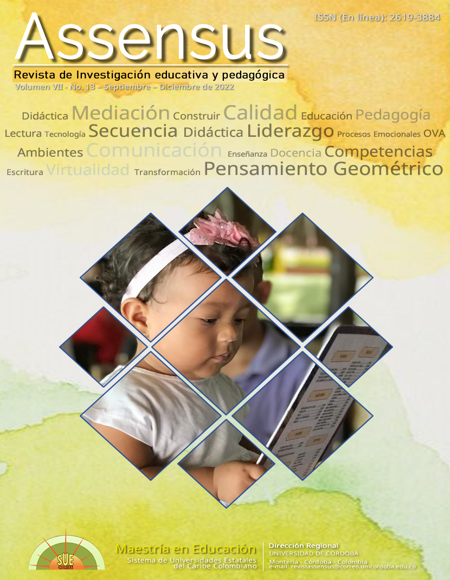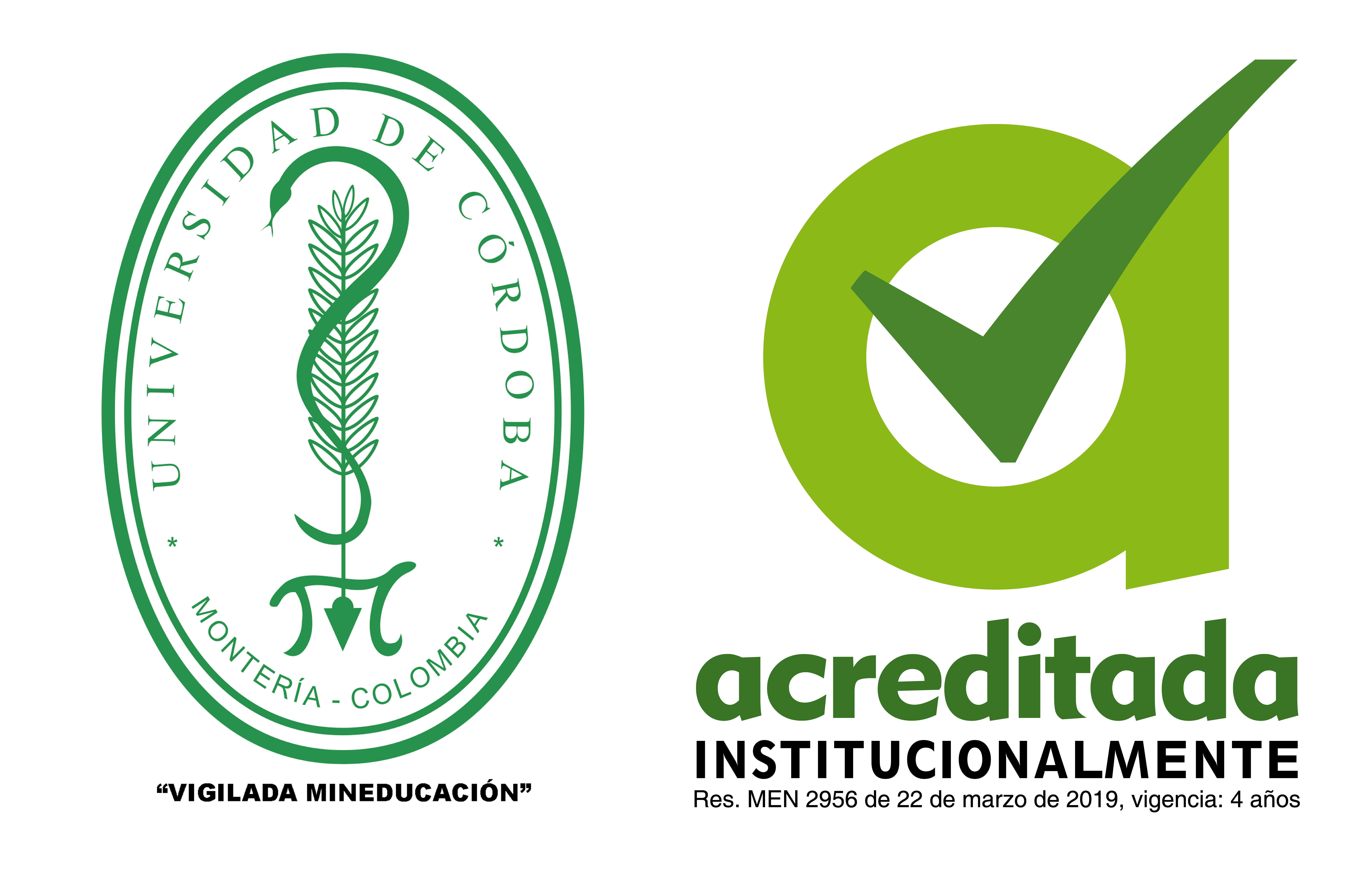Geometric Metric Component through collaborative learning
Componente Geométrico Métrico a través del aprendizaje colaborativo

This work is licensed under a Creative Commons Attribution-ShareAlike 4.0 International License.
The Assensus journal has a Creative Commons license. The citation, use and partial or total reproduction of the contents is authorized by citing sources. For more information, see https://creativecommons.org/licenses/by-sa/4.0/deed.en
Show authors biography
The drawbacks that are shown in the teaching and learning processes of mathematics are evidenced in the results of the students in the internal and external tests, which leads to proposing strategies that favor learning and development in basic skills. The influence of collaborative learning with leadership environments on the development of mathematical thinking was investigated, measured through the geometric metric component with students at high school level from an official educational institution. A quasi-experimental design that included a test to determine leadership conditions in the experimental group was used, and another test that evaluated the level of development of the component in the students, before and after the intervention. The results showed significant changes in the development of the geometric-metric component in the experimental group after being intervened, achieving improvements in the construction and manipulation of representations of the objects of space, the relationships between them and their transformations. This research represents a change from the traditional teaching model, allowing to conclude that the collaborative learning strategy produced a positive change in the students.
Article visits 282 | PDF visits
Downloads
- Acosta, R., Martín, A., y Hernández, A. (2019). Uso de las Metodologías de Aprendizaje Colaborativo con TIC: Un análisis desde las creencias del profesorado. Revista científica de la Universidad de Barcelona, (35). DOI: https://doi.org/10.1344/der.2019.35.309-323
- Alavi, M. (2020). Computer-Mediated Learning : An Empirical Evaluation. Management Information Systems Research Center, 18(2), 159–174. https://www.jstor.org/stable/249763
- Ali, H. (2015). The effect of collaborative learning and self-assessment on self-regulation. Educational Research and Reviews, 10(15), 2164–2167. https://doi.org/10.5897/err2015.2349
- Andreu, S. (2015). Una forma diferente de enseñar ciencias, a través del aprendizaje cooperativo en Primaria [Universidad Internacional de La Rioja]. https://reunir.unir.net/handle/123456789/3261
- Angulo-Vilca, P. (2021). El aprendizaje colaborativo virtual para la enseñanza de la matemática. Dominio de las Ciencias, 7(1), 253-267.
- Arreguín, L. E., Alfaro, J. A., & Ramírez, M. S. (2012). Desarrollo de competencias matemáticas en secundaria usando la técnica de aprendizaje orientado en proyectos. REICE: Revista Electrónica Iberoamericana Sobre Calidad, Eficacia y Cambio En Educación, 10(4), 264–284. http://www.rinace.net/reice/numeros/arts/vol10num4/art16.pdf
- Avello-Martínez, R., & Marín, V. I. (2016). The necessary training of teachers in collaborative learning. Profesorado, 20(3), 687–713.
- Cárdenas, J. (2016). MLIS - construcción de instrumento para medir el liderazgo en estudiantes de secundaria [Pontificia Universidad Católica del Perú]. http://tesis.pucp.edu.pe/repositorio/handle/20.500.12404/8463
- Cárdenas Palma, D., Ceballos Agudelo, C., & Cohen Aguilar, P. (2017). Aprendizaje colaborativo en estudiantes de básica secundaria en Colombia. Revista Gestión, Competitividad e Innovación, 2322–7184, 196–209. https://pca.edu.co/investigacion/revistas/index.php/gci/article/view/110/110
- Carlsen, M. (2010). Appropriating geometric series as a cultural tool: A study of student collaborative learning. Educational Studies in Mathematics, 74(2), 95–116. https://doi.org/10.1007/s10649-010-9230-0
- Chen, J., Wang, M., Kirschner, P. A., & Tsai, C. C. (2018). The Role of Collaboration, Computer Use, Learning Environments, and Supporting Strategies in CSCL: A Meta-Analysis. Review of Educational Research, 88(6), 799–843. https://doi.org/10.3102/0034654318791584
- Collazos, C., Guerrero, L., & Vergara, A. (2017). Aprendizaje Colaborativo Un cambio en el rol del profesor. Congreso de Educación Superior En Computación, Jornadas Chilenas de La Computación, p.1-10. http://www.academia.edu/download/41551142/Aprendizaje_Colaborativo_Un_cambio_en_el20160125-26126-ixow8k.pdf
- Díaz, A., & Uribe, J. (2016). Una resignificación en los procesos de enseñanza del lenguaje y las matemáticas a partir de la implementación del Programa Todos a Aprender (PTA). Assensus, 1(1), 42-58. https://doi.org/10.21897/assensus.1283
- Espitia Ramos, N. P., & Sierra Pineda, I. A. (2019). Influencia de los entornos tecnológicos móviles en los procesos de aprendizaje de las matemáticas. Assensus, 3(5), 2019. https://doi.org/10.21897/assensus.1608
- Fuentes, N. M., Wilches, J. C., & Robles, J. R. (2015). Desarrollo de los niveles de razonamiento geométrico según el modelo de Van Hiele y su relación con los estilos de aprendizaje. Panorama, 9, 44–54.
- Goleman, D., Boyatzis, R., & McKee, A. (2002). El líder resonante crea más. El poder de la inteligencia emocional. Plaza & Janés Editores. www.nbs.com.gt
- Guthrie, K. L., & Jenkins, D. M. (2018). The role of leadership educators : transforming learning. https://books.google.es/books?hl=es&lr=&id=yVdMDwAAQBAJ&oi=fnd&pg=PR15&dq=Guthrie,+K.+L.,+%26+Jenkins,+D.+M.+(2018).+The+role+of+leadership+educators:+Transforming+learning.+IAP.&ots=CUAEfxjW36&sig=iVAVAdTvGfBQn3JUQA69SwqRXks
- Hallinger, P., & Heck, R. (2014). Liderazgo colaborativo y mejora escolar: comprendiendo el impacto sobre la capacidad de la escuela y el aprendizaje de los estudiantes. REICE: Revista Electrónica Iberoamericana Sobre Calidad, Eficacia y Cambio En Educación, 12(4), 71–88. www.rinace.net/reice/
- ICFES. (s.f.). Instituto Colombiano para la Evaluación de la Educación Icfes. Retrieved May 18, 2018, from https://www.icfes.gov.co/
- ICFES. (2016a). Resultados. http://www2.icfesinteractivo.gov.co/ReportesSaber359/consultaReporteEstablecimiento.jspx
- ICFES. (2016b). Saber 9°. Lineamientos para las aplicaciones muestral y censal 2016 (pp. 1–74). ICFES. https://es.scribd.com/document/327847999/Guia-3-Lineamientos-Para-Las-Aplicaciones-Muestral-y-Censal-2016-v3
- Johnson, D. W., Johnson, R. T., & Holubec, E. J. (1993). Circles of learning: Cooperation in the classroom.
- Johnson, D.W., Johnson, R.T. & Smith, K. . (1991). Active Learning: Cooperation in the College Classroom. In Edina (pp. 1–6).
- Johnson, R.T. & Johnson, D. W. (1986). Action Research: Cooperative Learning in the Science Classroom. Journal of Science and Children, 24(2), 31–32.
- Johnson, D. W., & Johnson, R. T. (1981). Effects of cooperative and individualistic learning experiences on interethnic interaction. Journal of Educational Psychology, 73(3), 444–449. https://doi.org/10.1037/0022-0663.73.3.444
- Johnson, D. W., Skon, L., & Johnson, R. (1980). Effects of Cooperative, Competitive, and Individualistic Conditions on Children’s Problem-solving Performance. American Educational Research Journal, 17(1), 83–93. https://doi.org/10.3102/00028312017001083
- Kruse, K. (2013). What Is Leadership? http://www.forbes.com/sites/kevinkruse/2013/04/09/what-is-leadership/
- Kuo, Y. C., Belland, B. R., & Kuo, Y. T. (2017). Learning through blogging: Students’ Perspectives in collaborative blog enhanced learning communities. Educational Technology and Society, 20(2), 37–50.
- Laal, M., & Laal, M. (2012). Collaborative learning: What is it? Procedia - Social and Behavioral Sciences, 31, 491–495. https://doi.org/10.1016/j.sbspro.2011.12.092
- Lin, C. P., Shao, Y. J., Wong, L. H., Li, Y. J., & Niramitranon, J. (2011). The impact of using synchronous collaborative virtual tangram in children’s geometric. Turkish Online Journal of Educational Technology, 10(2), 250–258.
- Mellado, M. E., & Chaucono, J. C. (2015). Liderazgo pedagógico para reestructurar creencias docentes y mejorar prácticas de aula en contexto mapuche. Revista Electrónica Educare, 20(1), 371–388. https://doi.org/10.15359/ree.20-1.18
- MEN. (2006). Estándares Básicos de Competencias (Primera ed). Ministerio de Educación Nacional. https://www.mineducacion.gov.co/1621/articles-340021_recurso_1.pdf
- MEN. (2017). Matemáticas 10. Ministerio de Educación Nacional.
- Morales, L., García, O., Torres A., & Lebrija, A. (2018). Habilidades cognitivas a través de la estrategia de aprendizaje cooperativo y perfeccionamiento epistemológico en Matemática de estudiantes de primer año de universidad. Formación universitaria, 11(2), 45-56.
- Moreno-Guerrero, A. J., García, M. R., Heredia, N. M., & Rodríguez-García, A. M. (2020). Collaborative learning based on harry potter for learning geometric figures in the subject of mathematics. Mathematics, 8(3). https://doi.org/10.3390/math8030369
- Panitz, T. (1999). Collaborative versus Cooperative Learning: A Comparison of the Two Concepts Which Will Help Us Understand the Underlying Nature of Interactive Learning. In 12. http://files.eric.ed.gov/fulltext/ED448443.pdf
- Pérez, A. E. (2017). La colaboración como mediación en el aprendizaje de las matemáticas [Universidad Distrital Francisco José de Caldas]. http://repository.udistrital.edu.co/bitstream/11349/7735/1/LA COLABORACIÓN COMO MEDIACIÓN EN EL APRENDIZAJE DE LAS MATEMÁTICAS.pdf
- Pérez, M., D. (2017). Actividades basadas en el aprendizaje colaborativo y rendimiento académico de estudiantes de Matemática Superior de la escuela profesional de Administración de la Universidad Cesar Vallejo – Chimbote - 2017-II. Universidad San Pedro, Perú.
- Ruiz, C. (2013). Instrumentos y Técnicas de Investigación Educativa (Tercera Ed). https://www.academia.edu/37886948/Instrumentos_y_Tecnicas_de_Investigaci�n_Educativa_-_Carlos_Ruiz-Bolivar.pdf
- Sáenz, E. E., & Patiño, M. M. (2013). La resolución de problemas desde el modelo de George Polya, como estrategia didáctica para desarrollar el pensamiento geométrico en los estudiantes de grado 5° de la institución educativa villa cielo de montería (Vol. 53, Issue 9). Universidad de Córdoba.
- Sakshi MS’. (2018). Collaborative and Cooperative Learning: An Overview. IJRAR, 5(4), 165–167. www.ijrar.org
- Sawyer, J., & Obeid, R. (2017). Cooperative and Collaborative Learning: Getting the Best of Both Words. In How we teach now: The GSTA guide to student-centered teaching. (pp. 163–177). http://teachpsych.org/ebooks/
- Sierra Llorente, L. J., & Robles González, J. R. (2021). Aprendizaje colaborativo mediado por un ambiente de liderazgo, en el desarrollo del Pensamiento Aleatorio. Assensus, 6(10), 2021. https://doi.org/10.21897/assensus.2208
- Therán, E., & Oviedo, E. (2018). Desarrollo del pensamiento geométrico a partir del uso de estrategias didácticas soportadas en herramientas computacionales y el modelo Van Hiele. Assensus, 3(4), 49 - 59. https://doi.org/10.21897/assensus.1835
- Vásquez, L. (2012). Aprendizaje Colaborativo a lo largo de la historia y sus Características | Aprender en Comunidad. https://aprenderencomunidad.wordpress.com/2012/08/07/aprendizaje-colaborativo-a-lo-largo-de-la-historia-y-sus-caracteristicas/
- Vecchio, R. (2008). Leadership: understanding the dynamics of power and influence in organizations. Universidad de Notre Dame Pess., 45(05), 42–45. https://doi.org/10.5860/choice.45-2702
- Zañartu, L. M. (2011). Comunidades virtuales para la formación de maestros. Bloque: Aprendizaje colaborativo y TIC para maestros Aprendizaje colaborativo: una nueva forma de Diálogo Interpersonal y en red. Revista Digital de Educación y Nuevas Tecnologías, 12(3), 1–12. http://contexto-educativo.com.ar/2003/4/nota-02.htm.



